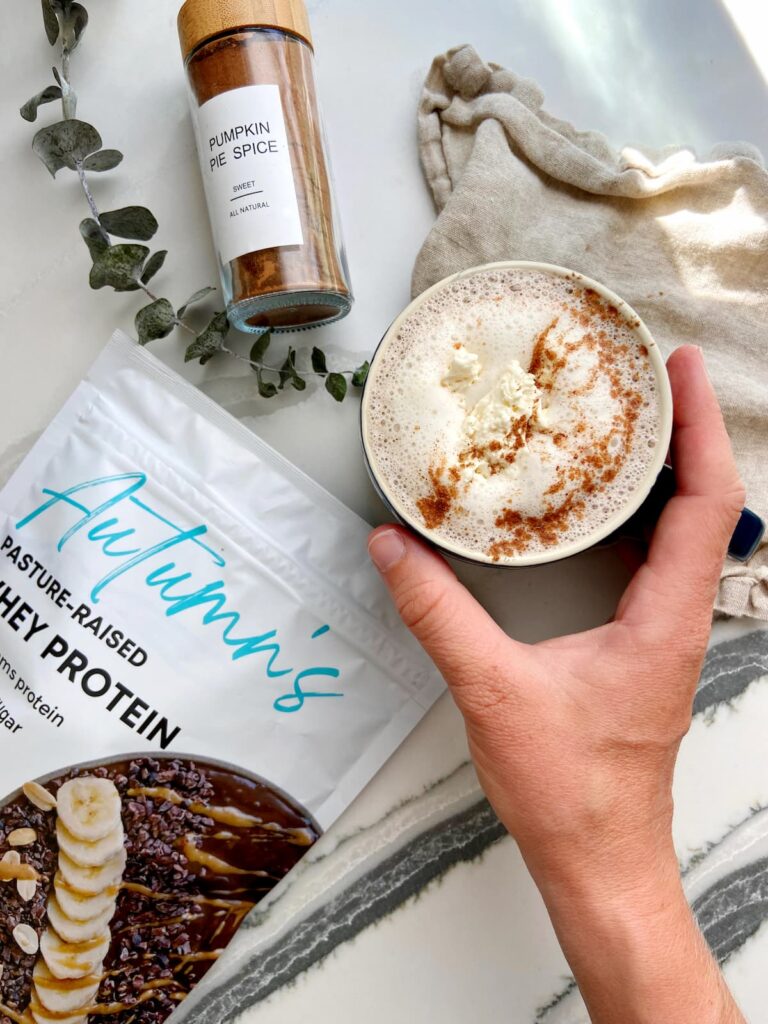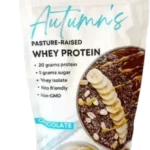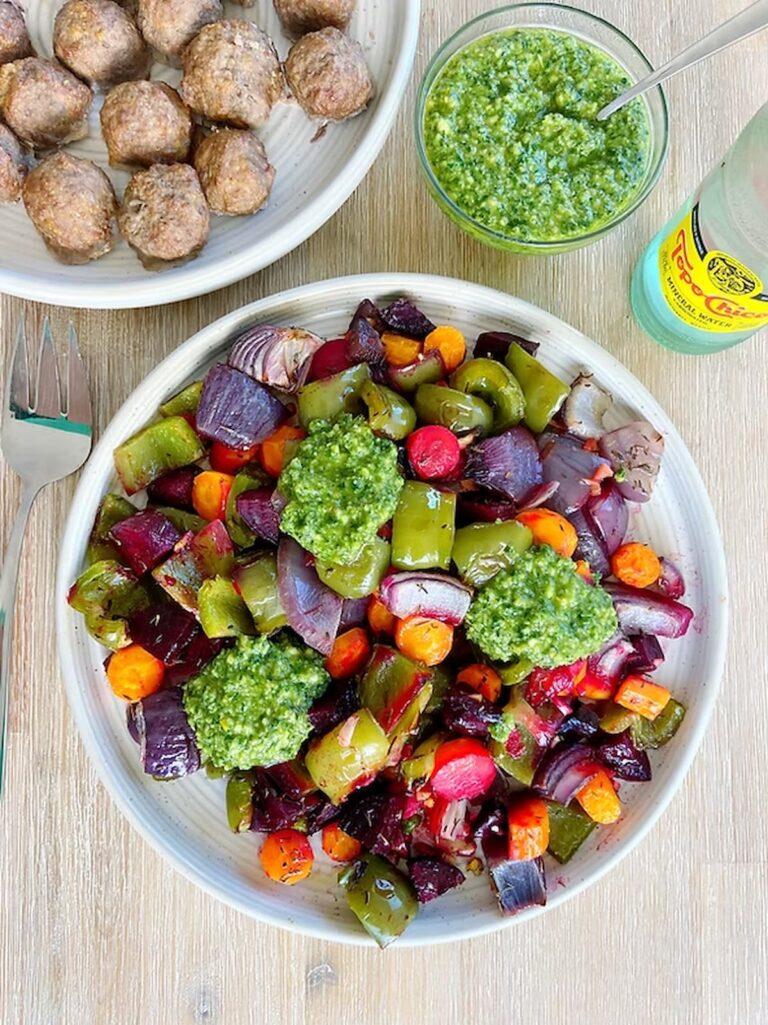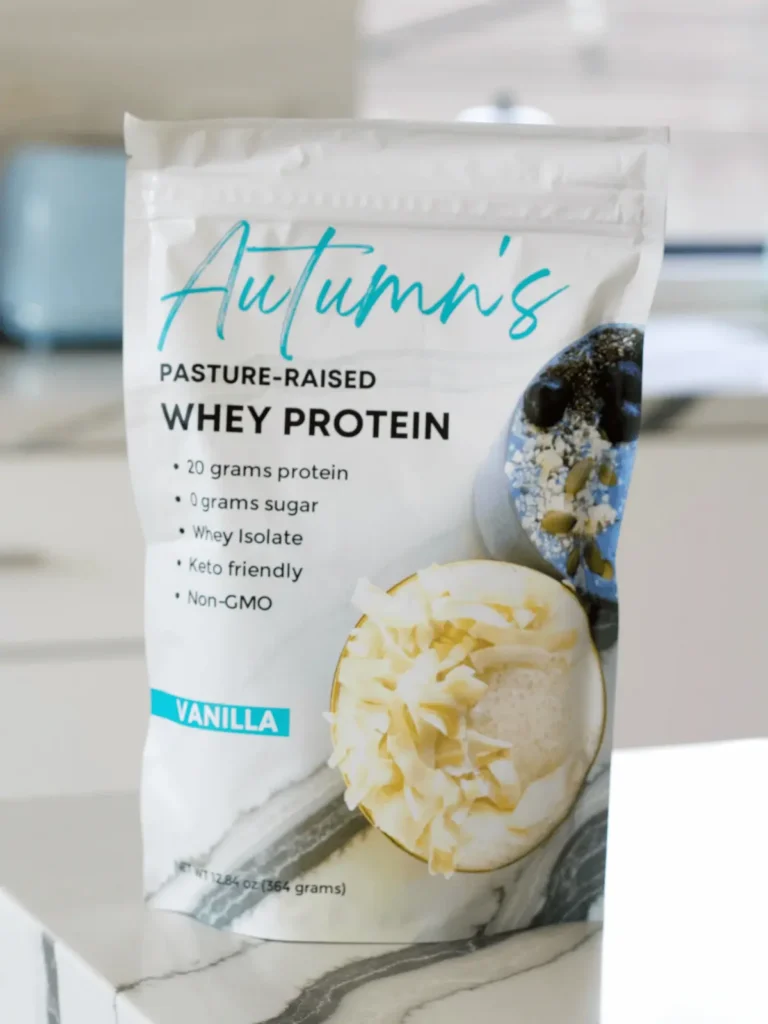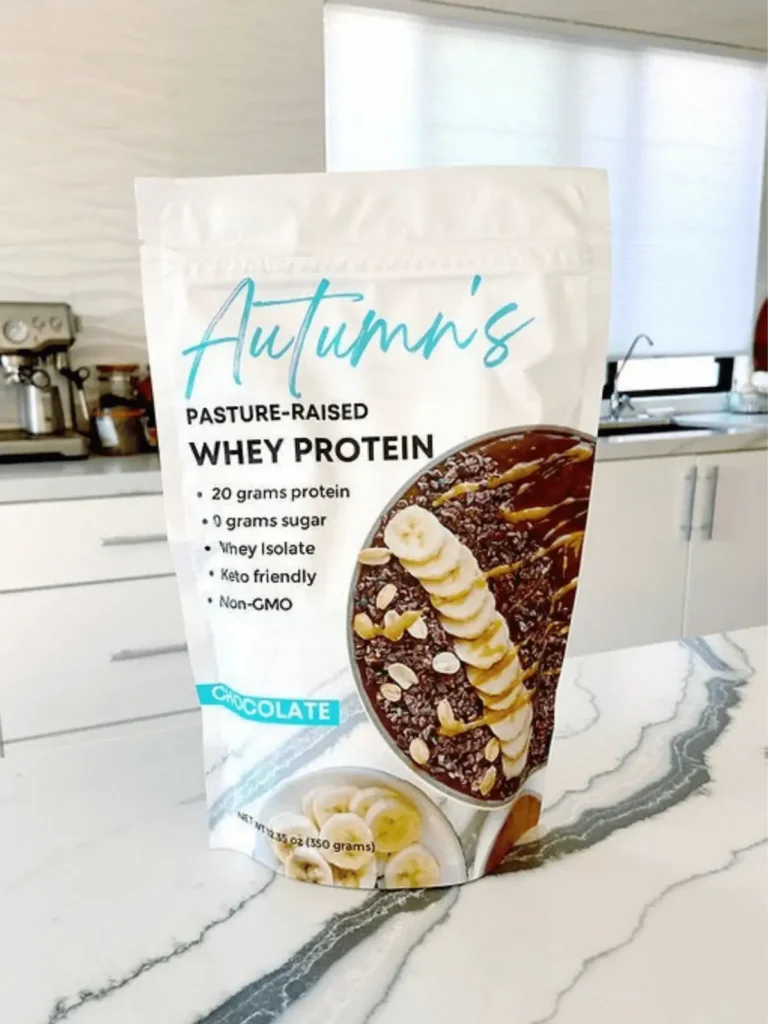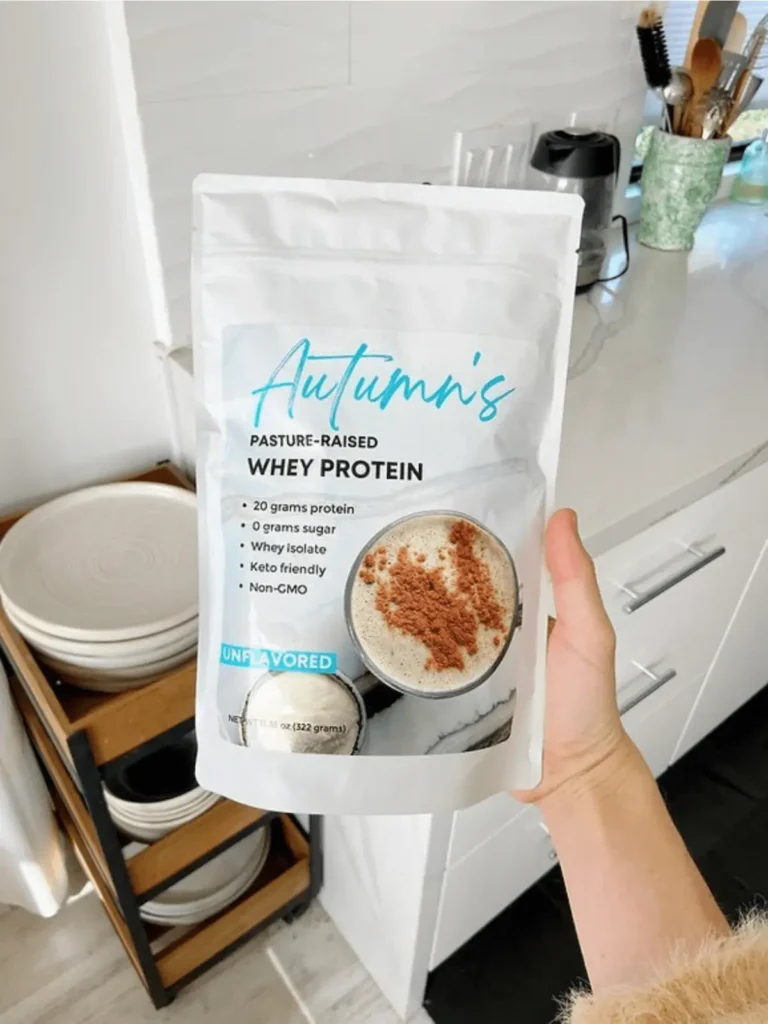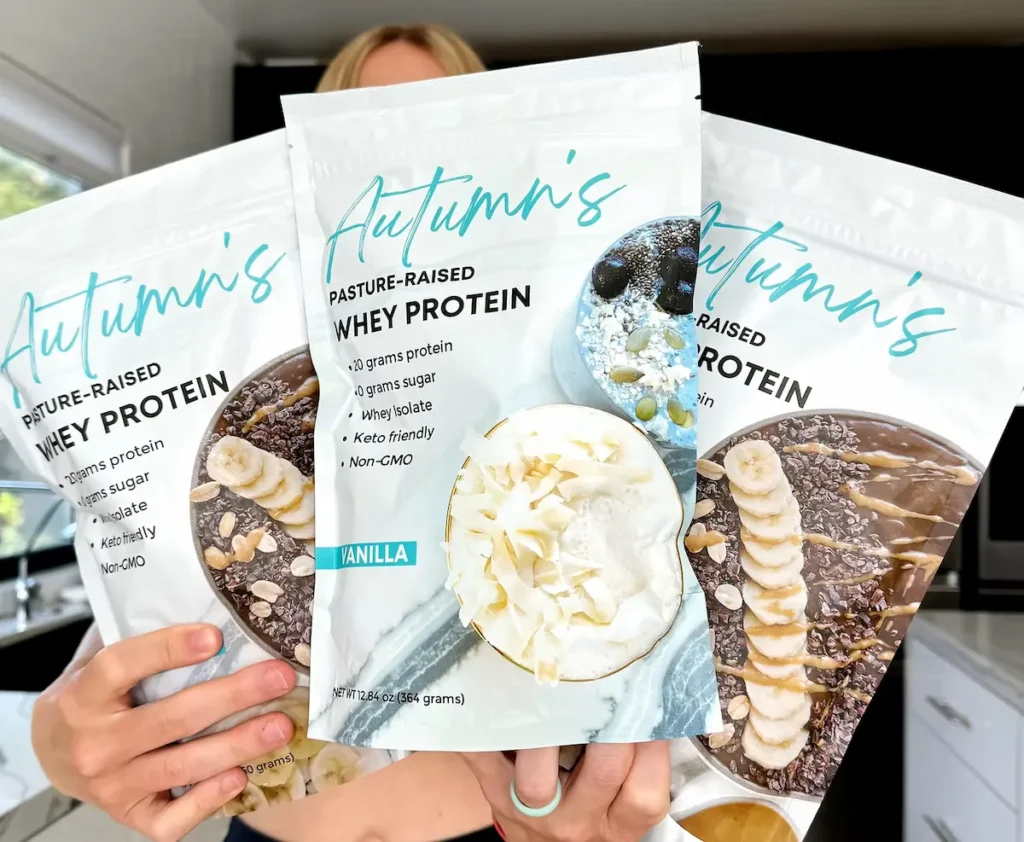This super straight forward glycemic load guide gives you a downloadable food list and delicious meal ideas for low glycemic load eating.
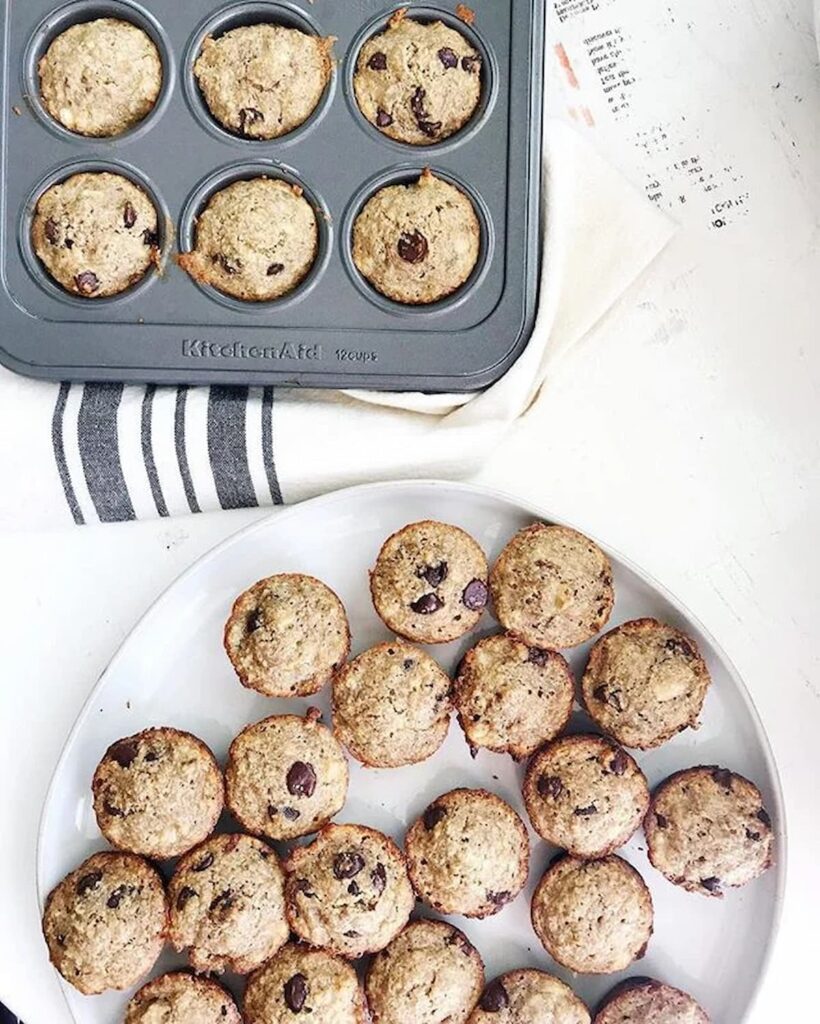
What Is Glycemic Load?
The glycemic load is a measurement of how greatly blood sugar is affected by a certain food. The glycemic load measurements are as follows:
- <10 = low glycemic load
- 10-19 = medium glycemic load
- >20 = high glycemic load
If a food has a high glycemic load, then it rapidly raises blood sugar levels. This rapid increase in blood sugar results in a large release of the storing hormone insulin. On the flip side, foods that are low glycemic load don’t really raise blood sugar that much or that quickly. This means it also won’t greatly spike the storing hormone insulin. So whether you’re looking to achieve a weight loss goal or looking to control blood sugar levels, aiming for low to medium glycemic load foods is important.
Depending on how insulin resistant or carb sensitive you are, this will determine which foods within the glycemic load that you’ll want to choose. For example, if you’re carb sensitive and looking to achieve a weight loss goal then you’ll want to primarily focus on low glycemic load foods only. But if you’re very active, resistance training and not looking to lose weight, then you can likely strategically add in medium and high glycemic load foods to help support your athletic goals.
Related: Are You Carb Sensitive? [Free Quiz]
Glycemic Load vs. Glycemic Index
The glycemic load is not to be confused with the glycemic index. Below are the measurements for glycemic index:
- <55 = low glycemic index
- 56-69 = medium glycemic index
- >70 = high glycemic index
The glycemic index is a measure of how quickly a food could potentially raise blood sugar, but it does not account for how many carbohydrates are in that food. This means some foods that drastically raise blood sugar could have a medium or low glycemic index because the “serving size” is larger than what the glycemic index accounts for. Or on the flip side, something can seem like it has an artificially high glycemic index but in reality has very little impact on blood sugar because the amount of carbs in a serving are so low.
For example, Amaranth (a type of grain) has a glycemic index of 35, which would be considered very low on the glycemic index. But its glycemic load is a whopping 19.9, making it borderline high glycemic load.
So if you’re looking to prioritize your wellness goals, it’s important to focus on glycemic load, not glycemic index.
Glycemic Load Food List
Below are downloadable glycemic load food lists. Save these to your desktop or pinterest, or you can print them for later reference. The green category are “low glycemic load” foods. The yellow are “medium glycemic load” foods. The red are “high glycemic load” foods.
Keep in mind that even though some foods are considered “low glycemic load”, it’s still important to keep an eye on total sugar (or starch) amount eaten in the day. For example, technically speaking, mango is a low glycemic load fruit, however it has a lot of sugar. Just one cup of mango has a whopping 31 grams of sugar. So even though small amounts of mango are likely fine (if you aren’t carb sensitive), you’ll still not want to overdo it. If you’re carb sensitive, then you’ll likely want to skip the foods that are higher in sugar or starches. These higher foods are listed with an asterisk in the “green” category.
Unless otherwise noted, all foods listed are the whole food form (not dried, canned or sweetened).
Note: Animal-based proteins (other than dairy) and pure fats (ex: oil, butter, etc.) are not listed. These all typically have a glycemic load of 0 because they do not contain carbohydrates that raise blood sugar. You can find a complete list of recommended proteins for weight loss HERE.
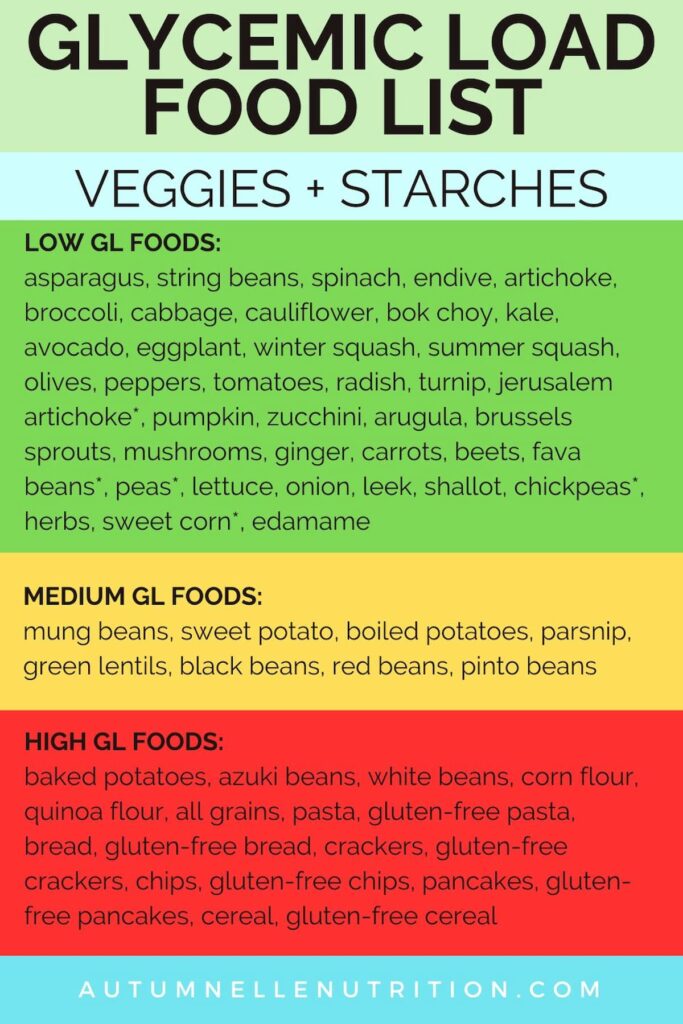
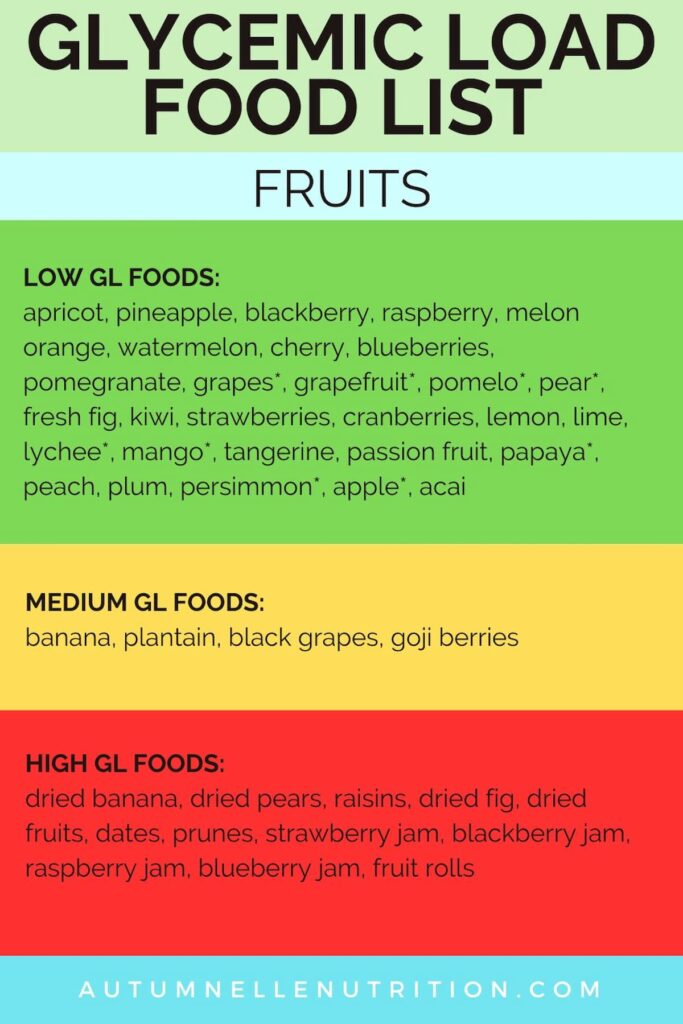

Low Glycemic Load Meal Plan
Below you can find recipes for meals made with low glycemic load ingredients. Feel free to experiment with these for a day of low glycemic load meals!
Coffee: Zero Sugar Cinnamon Vanilla Latte ~ Recipe HERE.
Breakfast: High Protein Strawberry Smoothie ~ Recipe HERE.
Lunch: Summery Caprese Salad ~ Recipe HERE.
Dinner: Pumpkin Sausage “Pasta” ~ Recipe HERE.
Dessert: High Protein Hot Chocolate ~ Recipe HERE.
